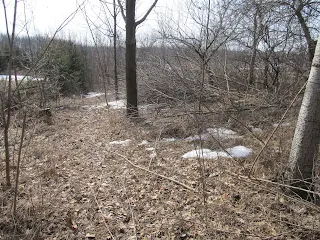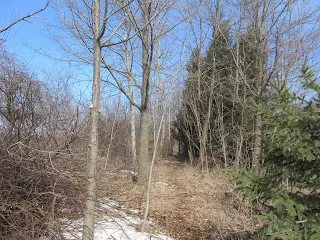 |
| Cutting 8' lengths to use as posts in the grape trellis |
It was a glorious day for working outside.
I have a system where I set the alarm clock on my phone for an hour-and-fifteen minutes. Then I take a break. Go to the house. Drink some water, maybe another cup of coffee. Eat a sandwich. After the break I go back outside for another hour-fifteen.
I find that as I approach sixty my thirst trigger is blunted. I have to make a point of drinking water. Taking the physical work in bites of seventy-five minutes means I don't get too ragged out.
The early part of the day was spent thinning black walnut trees. Seems a shame to use them for fence posts but they are only seven inches or so in diameter.
 |
| Some have very little heartwood, the most durable part of the log. |
 |
| Others have significantly more. |
 |
| Hybrid poplar end grain. |
 |
| Wild black cherry end grain. |
Examples of soft-mast producing trees are apples, pears, persimmon, mulberry, wild black cherry, choke cherry, wild plum, staghorn sumac.
I add diversity to the center of the travel corridor by including black locust for nitrogen fixing and the occasional oddball variety.
I try to follow the rule of having the travel corridor be a minimum of 60' wide. A biologist named Michael Parker shared this rule-of-thumb with me. He claims magical things happen when you get wider than 60'. For one thing, possum and raccoons cannot find and raid every bird nest. Another thing is that deer will happily bed down in a 60' travel corridor when they might be reluctant to bed down in one that is narrower.
The other day I scared a Great Horned Owl out of the cluster of spruce trees. I was startled to see how much its rear profile looked like a B-2 Bomber.



Interesting, I'd never heard the 60 foot rule, but that makes sense, especially in light of transmission line right of way and how many animals use that as their highway.
ReplyDelete